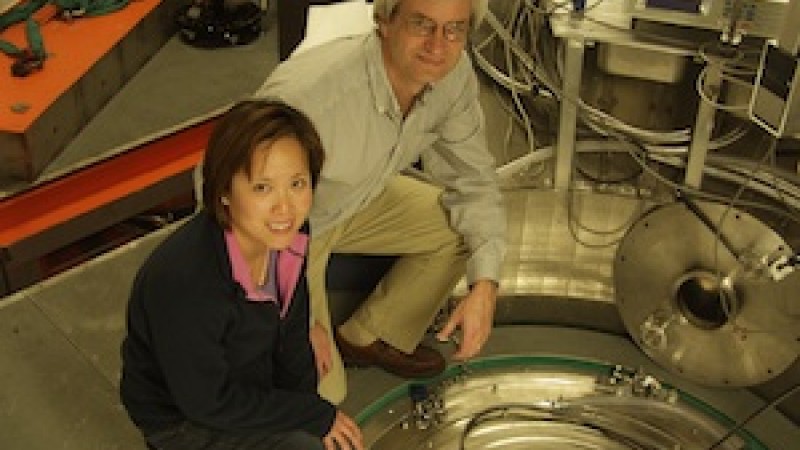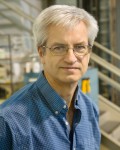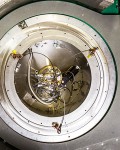A new furnace developed at the Spallation Neutron Source has enabled an ORNL research collaboration to observe how phonons carry heat at high temperatures in uranium dioxide (UO2)—a prototype for present and future nuclear reactor fuels. The measurements taken in December with ARCS, the Wide Angular-Range Chopper Spectrometer at the Spallation Neutron Source, will help validate calculations and computer simulations needed to understand the performance of new fuel elements for nuclear power reactors.*
The furnace can heat a sample up to 1300°C. It is an essential new capability for ARCS that allows neutron scattering scientists access to thermal conditions approaching the temperatures experienced by fuel within a nuclear power reactor.
“The combination of high temperature and pulsed neutrons at the SNS made it possible in just a few days to get a handle on one of the important factors controlling heat transport (power) out of nuclear fuel,” say the experimenters, Judy Pang of ORNL and William Buyers of Canada’s Chalk River Laboratories. “The use of neutron beams was not just a noncontact way of looking inside a hot environment; it gave us microscopic information on how the phonons push their way past a screen of vibrating atoms as temperature increases. The outstanding capabilities of the ARCS spectrometer and the expert help of [ARCS lead instrument scientist] Doug Abernathy made the experiment highly successful.”
Phonons consist of the oscillations of the atoms around their mean positions in the atomic lattice of a material. Phonons transport heat. ARCS was able to measure how the number of phonons with a given energy, called the phonon “density of states,” changes within the UO2 fuel pellets as temperatures approach those of reactor cores. Phenomena called anharmonic effects change the way heat is transported out of the fuel to produce power: they break up the coherent motion of atoms, making the phonons less efficient as heat carriers.
The ARCS team was able to quickly analyze and plot the gigabytes (billions of pieces) of data collected by the sophisticated multiple-detector beam line. “We were able to provide the data in a form that can be compared directly with the computer simulations that they are working on,” says Abernathy.
The new furnace was designed by the SNS Sample Environment team and a team of engineers led by Lou Santodonato. “When this was at maximum temperature it was at about 200 amps of current and about 10 volts on the heating element—a pretty high power. We are learning how to deal with all that,” Abernathy says.
The researchers will bring new samples and calculations to SNS in the spring and measure UO2 pellets prepared with different numbers of defects, using different incident neutron energies. “By measuring more precisely exactly how this is happening, you can really get a handle on how heat transport is affected by defects and see whether the researchers’ calculations are showing what we are in fact measuring, so that we can trust the calculations to guide the design of a new fuel element,” Abernathy says.
*The collaboration between SNS, ORNL’s Material Science and Technology Division, and Chalk River researchers was supported as part of the Center for Materials Science of Nuclear Fuel, an Energy Frontier Research Center funded by the U.S. Department of Energy’s Office of Basic Energy Sciences. and hosted by Idaho National Laboratory. The EFRC coordinates a multi-institutional experimental and computational effort in which neutron scattering is used to provide information on the thermal properties of fuel elements at the atomic level—an important component of understanding the effects of high temperature and irradiation-induced defects on thermal transport in nuclear fuels.





